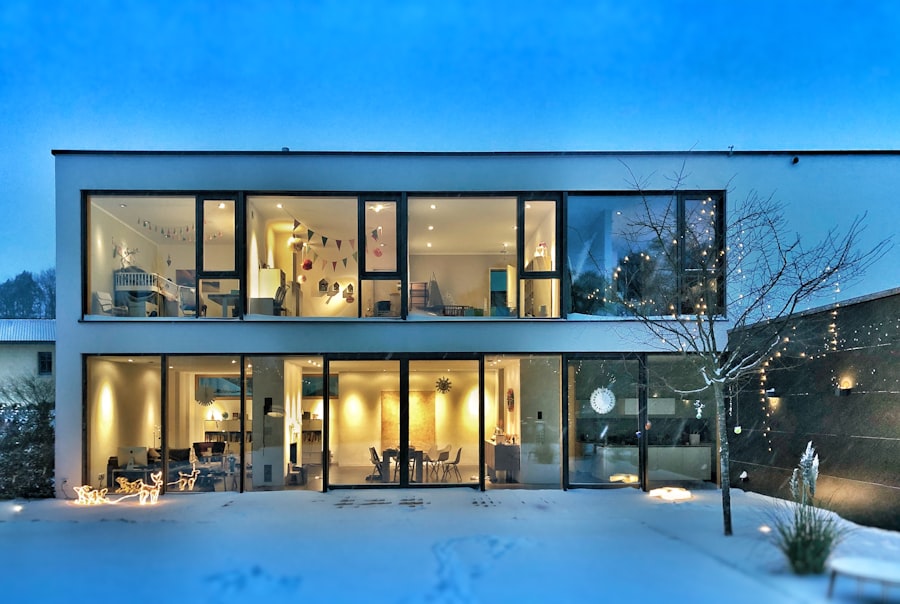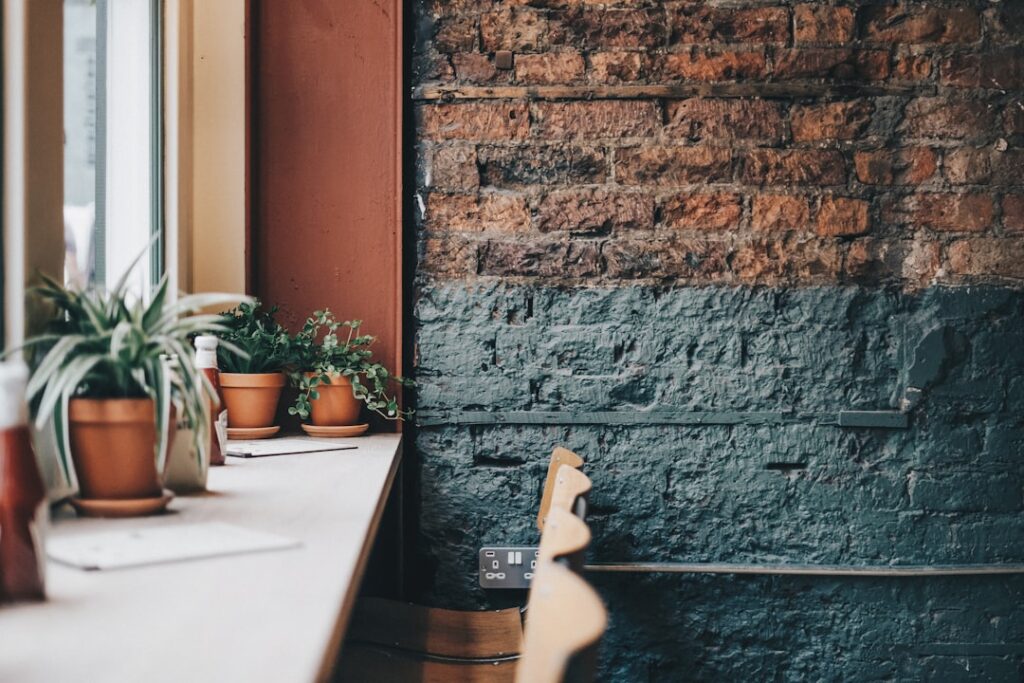Office design plays a pivotal role in shaping the work environment, influencing not only the aesthetic appeal of a space but also the productivity and well-being of employees. A thoughtfully designed office can foster collaboration, creativity, and efficiency, while a poorly designed one can lead to distractions, discomfort, and disengagement. The layout, furniture, lighting, and overall ambiance contribute significantly to how employees perceive their workplace.
For instance, open-plan offices have gained popularity for their ability to encourage communication and teamwork, yet they can also lead to noise distractions and a lack of privacy. Thus, striking the right balance in office design is essential for cultivating a positive work culture. Moreover, the importance of office design extends beyond mere functionality; it reflects the values and identity of an organization.
A well-designed office can communicate a company’s commitment to innovation, employee satisfaction, and sustainability. For example, tech companies often incorporate modern aesthetics with flexible workspaces that adapt to various tasks, signaling their forward-thinking approach. In contrast, traditional corporate environments may prioritize formality and hierarchy, which can stifle creativity.
As businesses evolve, so too must their office designs, adapting to the changing needs of their workforce and the demands of the market.
Key Takeaways
- Office design plays a crucial role in employee productivity and well-being
- Traditional office tables can lead to discomfort, reduced collaboration, and limited flexibility
- Ultimate tables offer features such as adjustable height, ergonomic design, and integrated technology
- Customization options for ultimate tables include size, shape, color, and material
- Ultimate tables improve productivity by promoting collaboration, comfort, and flexibility
The Drawbacks of Traditional Office Tables
Traditional office tables have long been the standard in workplace design, but they come with a host of drawbacks that can hinder productivity and employee satisfaction. One significant issue is their rigidity; traditional tables often lack flexibility in terms of configuration and usage. Employees are typically confined to a single workspace that may not accommodate different tasks or collaborative efforts.
This inflexibility can lead to frustration, as workers may find themselves unable to adapt their environment to suit their needs throughout the day. Additionally, traditional office tables often prioritize aesthetics over ergonomics. Many conventional designs do not take into account the varying heights and preferences of employees, leading to discomfort during long hours of work.
Poor posture resulting from inadequate table height can contribute to musculoskeletal issues, which are prevalent in office environments. Furthermore, traditional tables may not support modern technology effectively; with the rise of laptops and mobile devices, the need for integrated power sources and cable management has become increasingly important. The lack of these features in traditional designs can create cluttered workspaces that detract from focus and efficiency.
The Ultimate Table Solution: Features and Benefits

The concept of the ultimate table transcends traditional office furniture by incorporating innovative features that cater to the diverse needs of today’s workforce. One of the standout characteristics of these tables is their adaptability. Many ultimate tables are designed with adjustable heights, allowing users to switch between sitting and standing positions seamlessly.
This flexibility not only promotes better posture but also encourages movement throughout the day, which is essential for maintaining energy levels and focus. In addition to height adjustability, ultimate tables often come equipped with integrated technology solutions. Features such as built-in power outlets, USB ports, and wireless charging capabilities eliminate the need for cumbersome cords and power strips, creating a cleaner and more organized workspace.
Furthermore, many designs incorporate modular components that allow for easy reconfiguration based on team dynamics or project requirements. This adaptability fosters collaboration by enabling teams to create spaces that suit their specific needs, whether for brainstorming sessions or focused work.
Customization Options for Ultimate Tables
Customization is a key advantage of ultimate tables, allowing organizations to tailor their furniture solutions to align with their unique brand identity and functional requirements. Many manufacturers offer a range of materials, colors, and finishes that enable businesses to create a cohesive look throughout their office space. For instance, a tech startup might opt for sleek metal frames with vibrant tabletops to reflect its innovative spirit, while a law firm may choose classic wood finishes that convey professionalism and stability.
Beyond aesthetic choices, customization also extends to functionality. Organizations can select features such as integrated storage solutions or collaborative surfaces that enhance usability. For example, some ultimate tables come with whiteboard surfaces or writable panels that encourage brainstorming and idea sharing during meetings.
Additionally, companies can choose specific configurations that accommodate different team sizes or project types, ensuring that every workspace is optimized for productivity.
How Ultimate Tables Improve Productivity
The design and functionality of ultimate tables have a direct impact on employee productivity. By providing adjustable heights and versatile configurations, these tables empower employees to create an environment that suits their working style. Research has shown that allowing employees to alternate between sitting and standing can lead to increased energy levels and reduced fatigue.
This flexibility encourages movement throughout the day, which has been linked to improved focus and cognitive function. Moreover, ultimate tables often facilitate collaboration by enabling teams to easily rearrange their workspaces as needed. The ability to create informal meeting areas or collaborative zones fosters communication and idea exchange among team members.
When employees feel comfortable sharing ideas in an adaptable environment, it can lead to enhanced creativity and innovation. Additionally, the integration of technology features minimizes disruptions caused by searching for power sources or dealing with tangled cords, allowing employees to concentrate on their tasks without unnecessary distractions.
The Impact of Ultimate Tables on Employee Wellness

Employee wellness is increasingly recognized as a critical factor in organizational success, and ultimate tables contribute significantly to this aspect of workplace design. The ergonomic benefits of adjustable height tables cannot be overstated; they promote better posture and reduce the risk of musculoskeletal disorders that are common in sedentary office environments. By allowing employees to customize their working positions throughout the day, ultimate tables help mitigate discomfort associated with prolonged sitting.
Furthermore, the psychological impact of a well-designed workspace should not be overlooked. Aesthetically pleasing environments that incorporate natural elements or vibrant colors can enhance mood and reduce stress levels among employees. Ultimate tables often feature designs that prioritize both functionality and visual appeal, creating an inviting atmosphere that encourages productivity.
When employees feel comfortable and valued in their workspace, it can lead to higher job satisfaction and lower turnover rates.
Case Studies: Successful Implementation of Ultimate Tables
Several organizations have successfully implemented ultimate tables into their office designs, reaping significant benefits in terms of productivity and employee satisfaction. For instance, a leading tech company revamped its workspace by replacing traditional desks with adjustable height ultimate tables. The result was a noticeable increase in employee engagement; surveys indicated that workers felt more energized and motivated throughout the day.
The flexible nature of the tables allowed teams to collaborate more effectively during brainstorming sessions, leading to innovative product developments. Another case study involves a financial services firm that sought to modernize its office environment while promoting wellness among its employees. By integrating ultimate tables with ergonomic features into their design strategy, they created an environment conducive to both individual focus and team collaboration.
Employees reported reduced discomfort from prolonged sitting and appreciated the ability to adjust their workstations according to their preferences. This shift not only improved overall morale but also contributed to enhanced performance metrics across various departments.
Considerations for Implementing Ultimate Tables in Your Office
When considering the implementation of ultimate tables in an office setting, several factors should be taken into account to ensure a successful transition. First and foremost is assessing the specific needs of your workforce; understanding how employees prefer to work—whether collaboratively or independently—can guide decisions regarding table configurations and features. Conducting surveys or focus groups can provide valuable insights into employee preferences.
Budget considerations are also crucial when selecting ultimate tables. While investing in high-quality furniture may require a larger upfront cost, the long-term benefits in terms of productivity gains and employee retention can outweigh these initial expenses. Additionally, consider the layout of your office space; ultimate tables should complement existing design elements while enhancing functionality.
Collaborating with interior designers or workplace strategists can help create a cohesive plan that maximizes both aesthetics and usability. In conclusion, the evolution of office design necessitates a reevaluation of traditional furniture solutions like office tables. By embracing innovative options such as ultimate tables—characterized by adaptability, customization, and ergonomic benefits—organizations can create work environments that foster productivity and enhance employee well-being.
As businesses continue to navigate the complexities of modern work culture, investing in thoughtful office design will remain paramount for success.
When it comes to creating a productive office workstation in Dubai, the design of the office table plays a crucial role. A well-designed table can enhance productivity and efficiency in the workplace. For more information on how to create a productive office workstation, check out this article on officeinterior.ae. This article provides valuable insights and tips on how to optimize your office space for maximum productivity. Additionally, you can browse through their shop at officeinterior.ae/shop for a wide range of office furniture options to suit your needs.
FAQs
What are the key factors to consider when designing an office table?
When designing an office table, it is important to consider factors such as the size of the table, the material it is made of, the functionality it offers, and how it fits into the overall office design and layout.
What are the benefits of a well-designed office table?
A well-designed office table can improve productivity, create a more organized and efficient workspace, and contribute to a professional and aesthetically pleasing office environment.
What are some popular materials used in office table design?
Popular materials used in office table design include wood, metal, glass, and laminate. Each material offers different aesthetic and functional qualities, so the choice often depends on the specific needs and preferences of the office.
How can office table design impact employee productivity?
Office table design can impact employee productivity by providing a comfortable and functional workspace that promotes good posture, organization, and efficiency. A well-designed table can also contribute to a positive and motivating work environment.
What are some ergonomic considerations in office table design?
Ergonomic considerations in office table design include adjustable height options, proper leg room, and support for computer equipment. These features can help prevent discomfort and injury, and promote overall well-being for employees.


